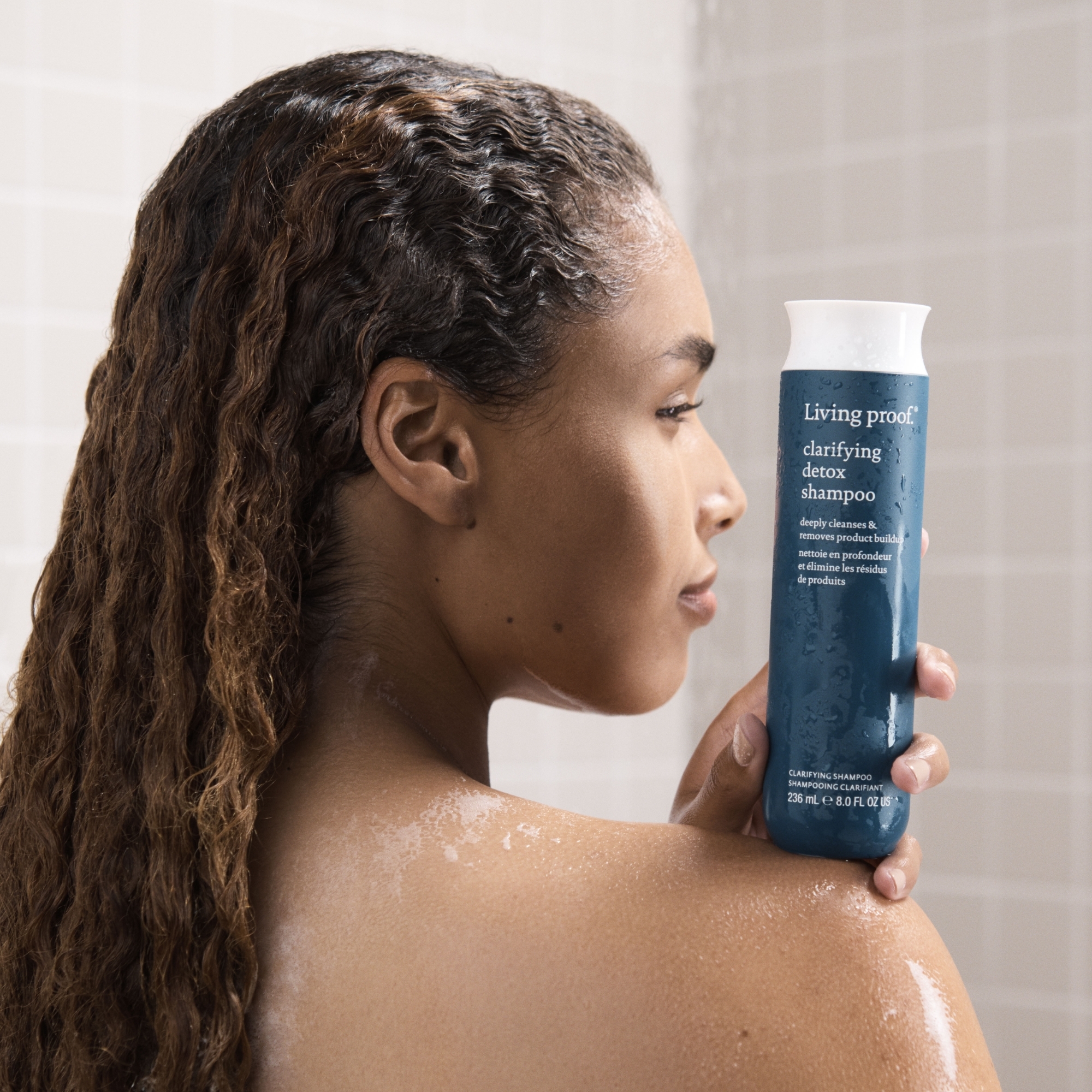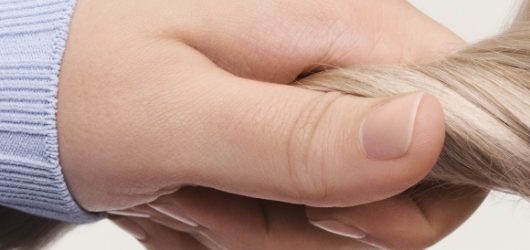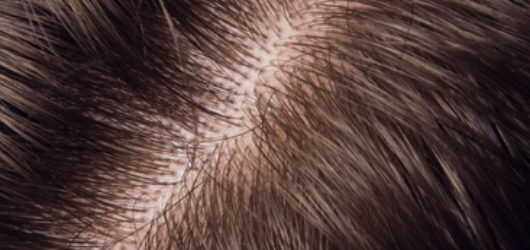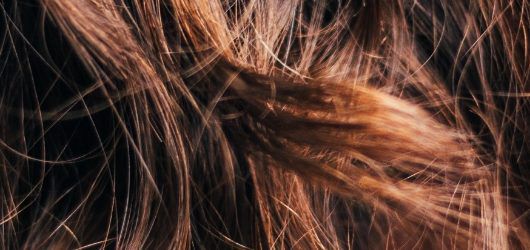
Fixing Heat Damaged Hair: Complete Guide to Restoring Your Hair's Health
Heat damaged hair occurs after exposure to excessive heat without proper protection, often due to frequent use of heat styling tools, prolonged sun exposure, and other factors. This damage can make your hair look dull and feel dry or brittle.
By understanding the root causes of heat damage and implementing preventive measures, you can significantly improve the health and appearance of your hair. And while some effects of heat damage may not be completely reversible, the right care can make a world of difference.
In this guide, we discuss what causes heat damage, how to identify it, and steps you can take to manage and prevent it going forward.
The science behind heat damage.
Understanding heat damage requires a brief look at the hair's structure and what happens when it's exposed to excessive heat.
Hair's Molecular Structure
Your hair consists of layers, with the outermost being the cuticle that acts like a protective coat. The cuticle includes the f-layer, essential for maintaining moisture and preventing frizz.
Excessive heat or harsh chemical treatments can strip away this f-layer, causing the protective cuticle to lift and making hair vulnerable to moisture loss and external damage.
If the heat exposure is extreme, the innermost part of the hair, called the cortex, can be harmed, leading to weakened hair that's prone to breakage. As a result, hair struggles to stay hydrated, resulting in a rough and dry appearance.
Heat and Hair Protein (Keratin)
Heat doesn't just affect the outer layers of hair; it also impacts the proteins, primarily keratin, that give hair its structure. Excessive heat can break the protein bonds, leading to a compromised hair structure.
Impact on Hair's Moisture Balance
With broken protein bonds and damaged cuticles, hair loses its ability to maintain a healthy moisture balance. Dryness often ensues, further weakening the hair strand.
Consequences of Prolonged Heat Exposure
Continual exposure to high heat without protection can lead to persistent dryness, repeated breakage, and an overall loss of hair's vitality and shine. This is why it's crucial to recognize the signs of heat damage early and take preventive measures.
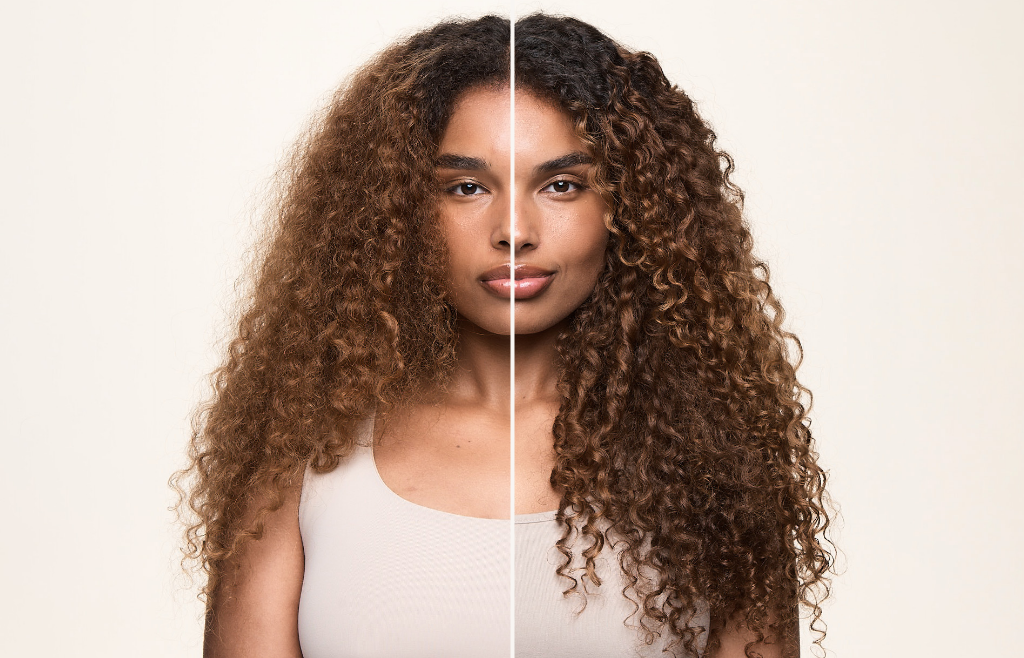
What causes heat damaged hair?
Heat damaged hair can occur due to a combination of styling practices and environmental factors. Here are the top causes.
- Overuse of heat styling tools: Regular and prolonged use of straighteners, curling irons, and hair dryers can expose hair to high temperatures. A study on hair degradation from the medical journal Polymers found that “Blow-drying the hair [without heat protectants] causes the scale edges to become concave-shaped due to cuticle layer splitting” and “Thermal straightening promotes overheating of the hair shaft, causing weakening and rupture.” Without moderation or proper techniques, these tools can cause significant stress and damage to the hair.
- Lack of heat protection: Before styling, it's crucial to apply protective products. Skipping this step means your hair faces the brunt of the heat without a safeguard, leading to quicker and more severe damage.
- Frequent, intense chemical treatments: Coloring and perms involve chemicals that alter hair structure. When done frequently, these treatments can weaken the hair, making it more susceptible to heat damage.
- Environmental factors: It's not just our styling habits that pose a risk. Persistent sun exposure can also have a detrimental effect on hair health. Just as the skin can burn and become damaged from the sun, hair too can suffer when exposed to UV rays for extended periods.
3 levels of heat damaged hair.
Understanding the extent of heat damage is essential for effective treatment and management. Here's a breakdown of the three levels of heat damage, from mild to severe.
Level 1: Mild Damage
At this initial stage, the effects of heat damage are subtle but noticeable. The hair might feel slightly dry and have a few split ends. This level is often a result of occasional heat styling without protection or infrequent exposure to environmental factors.
Level 2: Moderate Damage
As damage progresses, the signs become more evident. The hair has pronounced split ends, loses its shine, and lacks natural elasticity, making it less bouncy and more prone to snapping when stretched.
Level 3: Severe Damage
This is the most advanced stage of heat damage. The hair undergoes extensive breakage, feels exceptionally dry, and becomes porous, meaning it can't retain moisture well. The texture of the hair also changes, becoming brittle and increasing the likelihood of further damage.
Identifying the level of heat damage is crucial for adopting the right care regimen. The earlier you can pinpoint and address the damage, the better the chances of restoring your hair's health.
Common signs of heat damaged hair.
Heat damage manifests in various ways, each indicative of the stress the hair has undergone. Recognizing these signs is the first step to remediation. Here are the common symptoms of heat damaged hair:
- Dry and brittle hair: Hair loses its natural moisture, becoming dry and prone to snapping when pulled or combed.
- Split ends: The ends of the hair strand split into multiple pieces, indicating the breakdown of the hair's protective layer.
- Dull and lackluster hair: Healthy hair has a natural shine, whereas heat damaged hair appears dull.
- Tangled and frizzy hair: The raised cuticles of damaged hair cause tangles easily and can lead to frizz.
- Lack of hair elasticity and resilience: Healthy hair stretches and returns to its original form. Damaged hair loses this elasticity, becoming less pliable and more prone to breaking.
- Breakage: The hair strand weakens and breaks off at various points, not just the ends. It's important to differentiate between hair loss from the root and hair breakage. The latter, often due to heat damage, means the hair breaks off at some point along the strand. Based on current knowledge, heat treating the hair doesn't impact the hair follicle's growth cycle.
- Flyaways: Strands of hair stick out or don't align with the rest, often due to damage and static.
- Rough texture: Hair feels coarse to the touch, a direct result of damaged cuticles.
- Incorrect/uneven hair color: Excessively heat-styled, color-treated hair can experience color fading. Heat can degrade some of the dye, and a damaged cuticle can allow water-soluble dyes to wash out more easily, causing hair color to appear faded or not as intended.
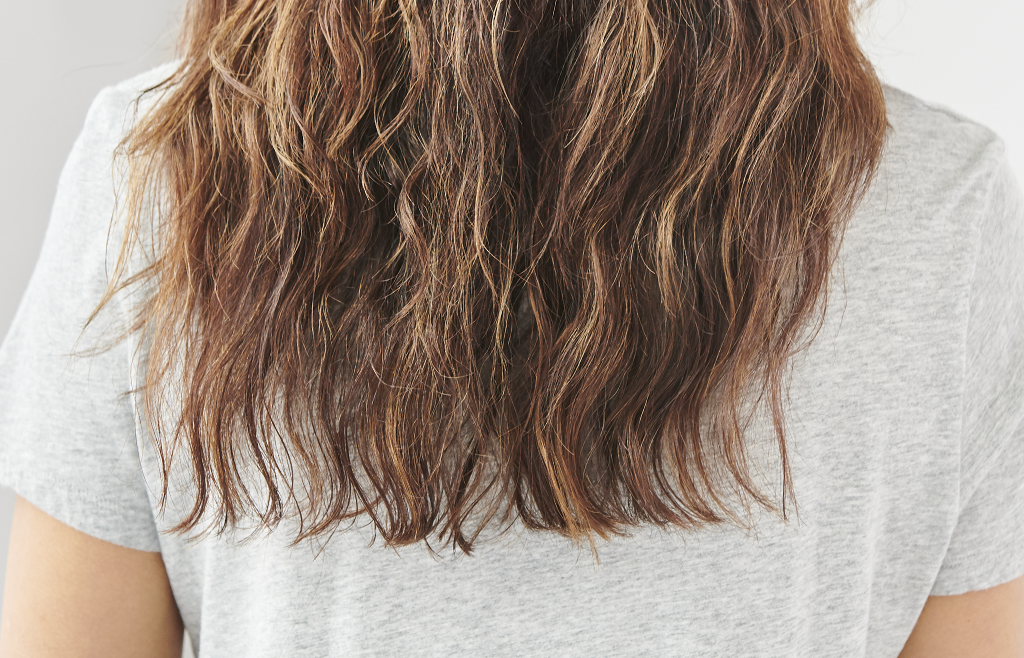
Pro tips for preventing heat damage.
Before the signs of heat damage even appear, there's a lot you can do to safeguard your hair. Here's how you can proactively defend against the adverse effects of heat.
1. Limit Heat Styling
The less frequently you expose your hair to high temperatures, the healthier it'll stay. Consider air-drying your hair or using heat-less styling methods whenever possible.
2. Always Use a Heat Protectant
Before using any heat tool, apply a heat protectant spray or serum. It acts as a barrier between your hair and the heat, reducing potential damage.
3. Nourish with Quality Products
A well-nourished hair strand is naturally more resistant to damage. Invest in quality haircare products that hydrate, replenish, and fortify your hair.
4. Avoid Styling Damp Hair with Straighteners or Curling Irons
Ensure your hair is completely dry before using straighteners or curling irons. Using these tools on damp hair can cause significant harm.
5. Mind the Distance with Blow Dryers
When using a blow dryer, keep it at least 5 inches away from your hair. This reduces the intensity of direct heat on any specific section of your hair.
6. Adjust Your Tool's Temperature
Higher doesn't always mean better. Use your heat tools at a lower setting. With the right products and techniques, you can achieve the desired style without maxing out the heat.
7. Explore No-Heat Styles
Embrace natural methods to style your hair. From braids to buns or using products designed for overnight styling, there are plenty of ways to achieve fantastic looks without heat. Not only does this reduce damage, but it also promotes healthier hair growth and texture over time.
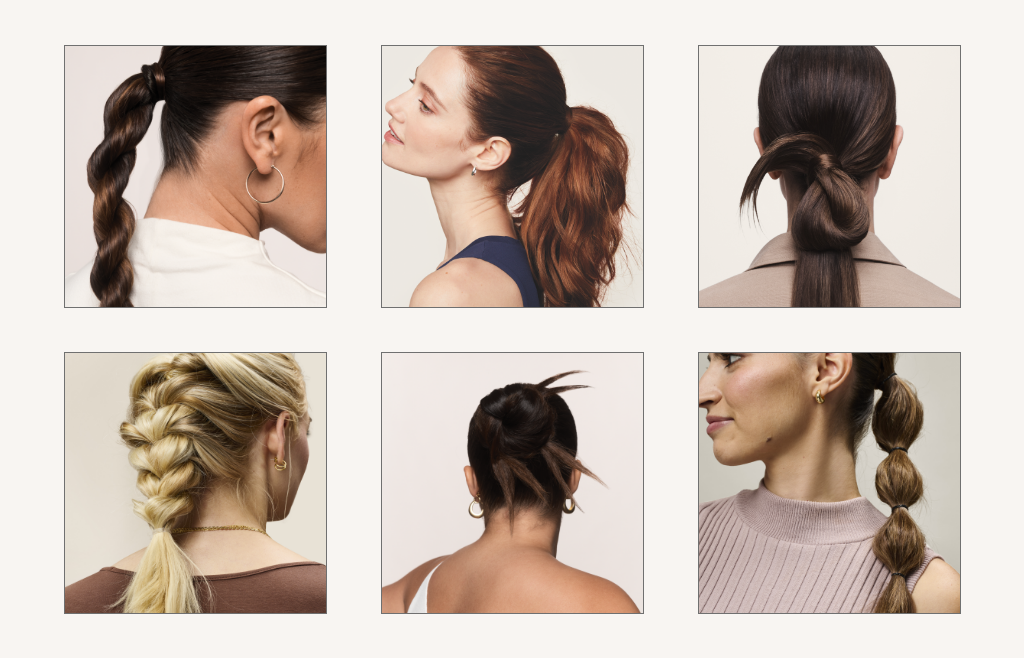
How to fix heat damaged hair.
Repairing heat-damaged hair requires a comprehensive approach. The damage might be multifaceted, so the solution must be well-rounded. Here's a detailed guide on steps you can take.
1. Opt for Products with Peptides and Amino Acids
Focus on treatments that contain peptides and amino acids. These components are small and can penetrate deeper into the hair shaft, offering reparative benefits. Products with these ingredients can rejuvenate damaged hair, enhancing its strength and appearance.
2. Reduce Your Use of Heat
Cutting back on the frequency of heat styling can be helpful. When you do need to style:
- Ensure your hair is fully dry before using flat irons or curling irons.
- Always apply a heat-protecting product. Products such as Living Proof's Restore Perfecting Spray and PhD Heat Styling Spray can offer protection against heat-induced damage.
3. Consider a Haircut
Sometimes, the best solution for extensively damaged hair, especially at the ends, is to get a trim. Removing the most damaged parts can prevent further breakage and give your hair a fresh start.
4. Use Bond-building Products
These are specially formulated products that focus on rebuilding the hair's internal structure. By strengthening the hair's bonds, they enhance resilience against future damage. Try Living Proof’s Triple Bond Complex for hair that’s 8x stronger* and more resistant to future damage.
*Against grooming breakage vs untreated
5. Apply Oils, but Choose Wisely
Oils can provide the hair with essential nutrients and moisture. However, it’s important to choose products that are effective for your specific hair needs. Opt for specialized formulations like No Frizz Vanishing Oil and No Frizz Smoothing Serum, which are designed to provide targeted benefits, ensuring your hair receives the right kind of nourishment and care.
FAQs
Is heat damage permanent?
It depends on the severity. Mild heat damage, where hydrogen or ionic bonds are affected, can be reversible. These bonds naturally break and reform, allowing hair to change shape (like when we curl or straighten it). However, severe heat damage can result in the breaking of disulfide bonds, which unfortunately can't be reversed.
How can I style my hair without heat?
Depending on your hair type, there are several methods:
- Straight and wavy hair: Apply a styling product to damp hair. Let it air dry until it's about 50-70% dry. Then, use heatless tools like socks, rollers, or heatless curling rods, or opt for braiding. You can sleep with these styles overnight or let your hair dry fully before removing them. To maintain the look, reapply the style each night.
- Curly/coily hair: After styling your curls or coils as usual, let them air dry. For refreshing, mist your hair with water or a conditioning spray and reshape using your finger or a rod.
How often should I use heat-protectant products?
Always use a heat protectant before any heat styling session. It acts as a shield, reducing the potential damage from the direct heat.
What is the best temperature for heat styling tools to prevent damage?
While it's advisable to keep temperatures low, any setting above 140°F / 60°C can cause some level of hair damage. Using a heat protectant can offer additional protection. As a rule, try not to set your flat iron or curling iron higher than 392°F / 200°C.
Can hair fully recover from severe heat damage?
Recovery is a nuanced process. While certain products, like Living Proof's Triple Bond Complex, can prevent further heat damage and even recover some of the fiber strength lost due to severe heat exposure, hair can't be restored to its exact pre-damage state. Think of it like a torn piece of paper — while you can tape it back together, the paper will never be the same as before the tear.
Conclusion: Give Your Hair New Life with Living Proof
Heat damage is a common concern, but it's manageable with the right products and tools at your disposal.
Living Proof offers a range of products designed to tackle heat damage head-on. From protective sprays to treatments rich in peptides and amino acids, our lineup ensures your hair receives the best care.
Ready to find the perfect solution tailored for you? Check out our Hair Quiz to discover which Living Proof products best suit your needs.
- American Academy of Dermatology. 10 Hair Care Habits That Can Damage Your Hair. https://www.aad.org/public/everyday-care/hair-scalp-care/hair/habits-that-damage-hair
- Hiroshima University. Scientists shine new light on heat-damaged hair. https://phys.org/news/2021-01-scientists-heat-damaged-hair.html
- NIH. Effects of heat treatment on hair structure. https://pubmed.ncbi.nlm.nih.gov/19467113/
- NIH. Effect of mineral oil, sunflower oil, and coconut oil on prevention of hair damage. https://pubmed.ncbi.nlm.nih.gov/12715094/
- NIH. Hair Cosmetics: An Overview. https://www.ncbi.nlm.nih.gov/pmc/articles/PMC4387693/
- NIH. Hair Shaft Damage from Heat and Drying Time of Hair Dryer. https://www.ncbi.nlm.nih.gov/pmc/articles/PMC3229938/
- NIH. Health improvement of human hair and their reshaping using recombinant keratin K31. https://www.ncbi.nlm.nih.gov/pmc/articles/PMC6218806/
- NIH. Modification of wheat gluten for improvement of binding capacity with keratin in hair. https://www.ncbi.nlm.nih.gov/pmc/articles/PMC5830729/
- NIH. Structural investigation on damaged hair keratin treated with α,β-unsaturated Michael acceptors used as repairing agents. https://pubmed.ncbi.nlm.nih.gov/33279560/
- NIH. The effect of various cosmetic pretreatments on protecting hair from thermal damage by hot flat ironing. https://pubmed.ncbi.nlm.nih.gov/21635854/
- Purdue University. Integrating Design Methodology, Thermal Sciences, and Customer Needs to Address Challenges in the Hair Care Industry. https://engineering.purdue.edu/reidlab/pdf/2015_IDETC_Hahn%20et%20al.pdf
- Healthline. How to Treat Heat-Damaged Hair Without Cutting It https://www.healthline.com/health/beauty-skin-care/heat-damaged-hair#treatment

